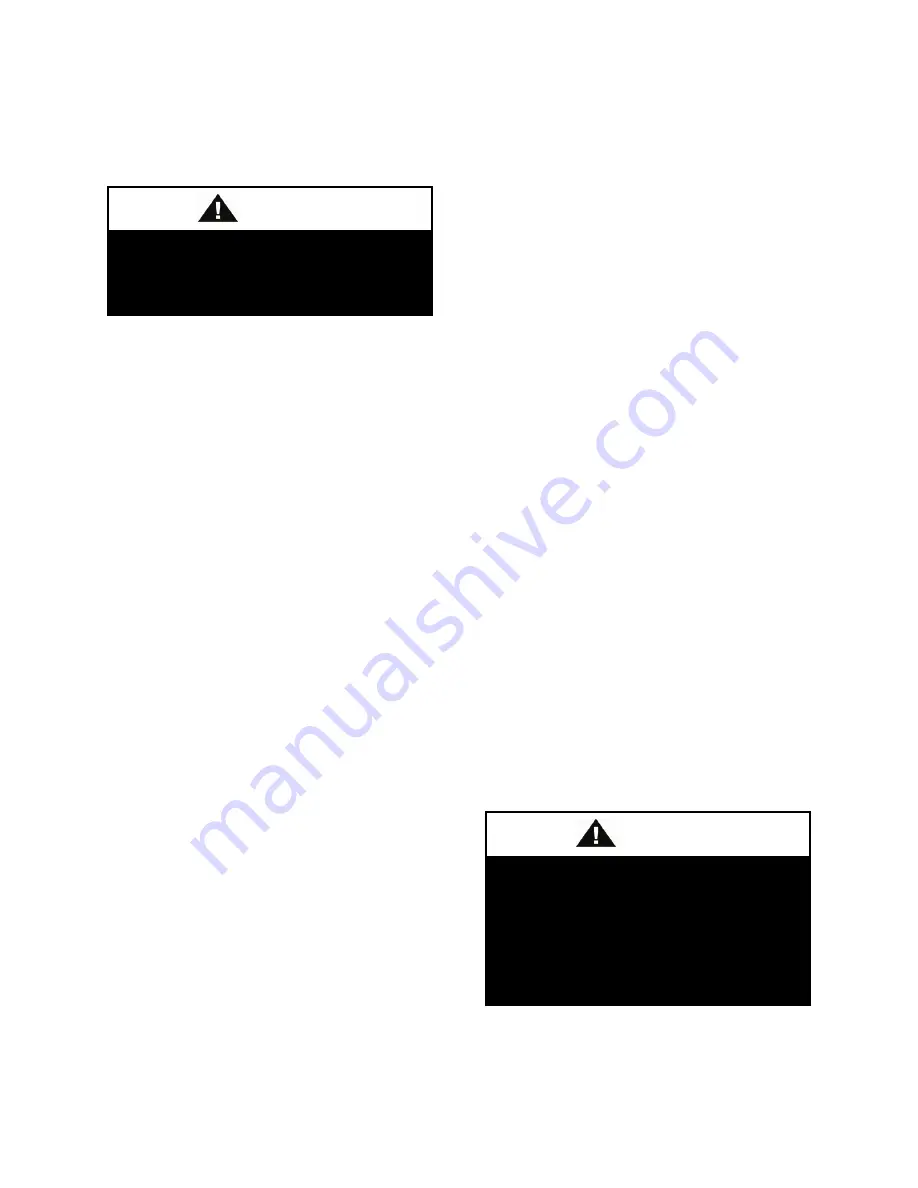
27
Adjusting Refrigerant Charge
Unit must be operating in the cooling mode to
adjust the refrigerant charge.
Adjusting the charge of a system in the field
must be based on determination of liquid sub-
cooling and evaporator superheat. On a
system with a TXV liquid sub-cooling is
more representative of the charge than
evaporator superheat but both measurements
must be taken.
Before Charging
Unit being charged must be at or near full
load conditions before adjusting the charge.
Units equipped with hot gas reheat must be
charged with the hot gas reheat valves closed
while the unit is in cooling mode to get the
proper charge. After charging, operate the
unit in reheat (dehumidification) mode to
check for correct operation.
After adding or removing charge the system
must be allowed to stabilize, typically 10-15
minutes, before making any other
adjustments.
The type of unit and options determine the
ranges for liquid sub-cooling and evaporator
superheat. Refer to the tables below when
determining the proper sub-cooling.
Checking Liquid Sub-Cooling
Measure the temperature of the liquid line as
it leaves the refrigerant-to-water heat
exchanger.
Read the gauge pressure at the liquid line
close to the point where the temperature was
taken.
Convert the pressure obtained to a saturated
temperature using the appropriate refrigerant
temperature-pressure chart.
Subtract the measured liquid line temperature
from the saturated temperature to determine
the liquid sub-cooling.
Compare calculated sub-cooling to the table
below for the appropriate unit type and
options.
Checking Evaporator Superheat
Measure the temperature of the suction line
close to the compressor.
Read gauge pressure at the suction line close
to the compressor.
Convert the pressure obtained to a saturated
temperature using the appropriate refrigerant
temperature-pressure chart.
Subtract the saturated temperature from the
measured suction line temperature to
determine the evaporator superheat.
Compare calculated superheat to the
following table for the appropriate unit type
and options.
Due to the charge-critical nature of
these units, charge must only be
adjusted if absolutely necessary.
DO NOT OVERCHARGE!
Refrigerant overcharging leads to
excess refrigerant in the refrigerant-
to-water heat exchanger coils
resulting in elevated compressor
discharge pressure.
CAUTION
CAUTION
Содержание ProFit WV Series
Страница 2: ......
Страница 45: ...Literature Change History July 2022 First Version ...
Страница 46: ......
Страница 47: ......






























